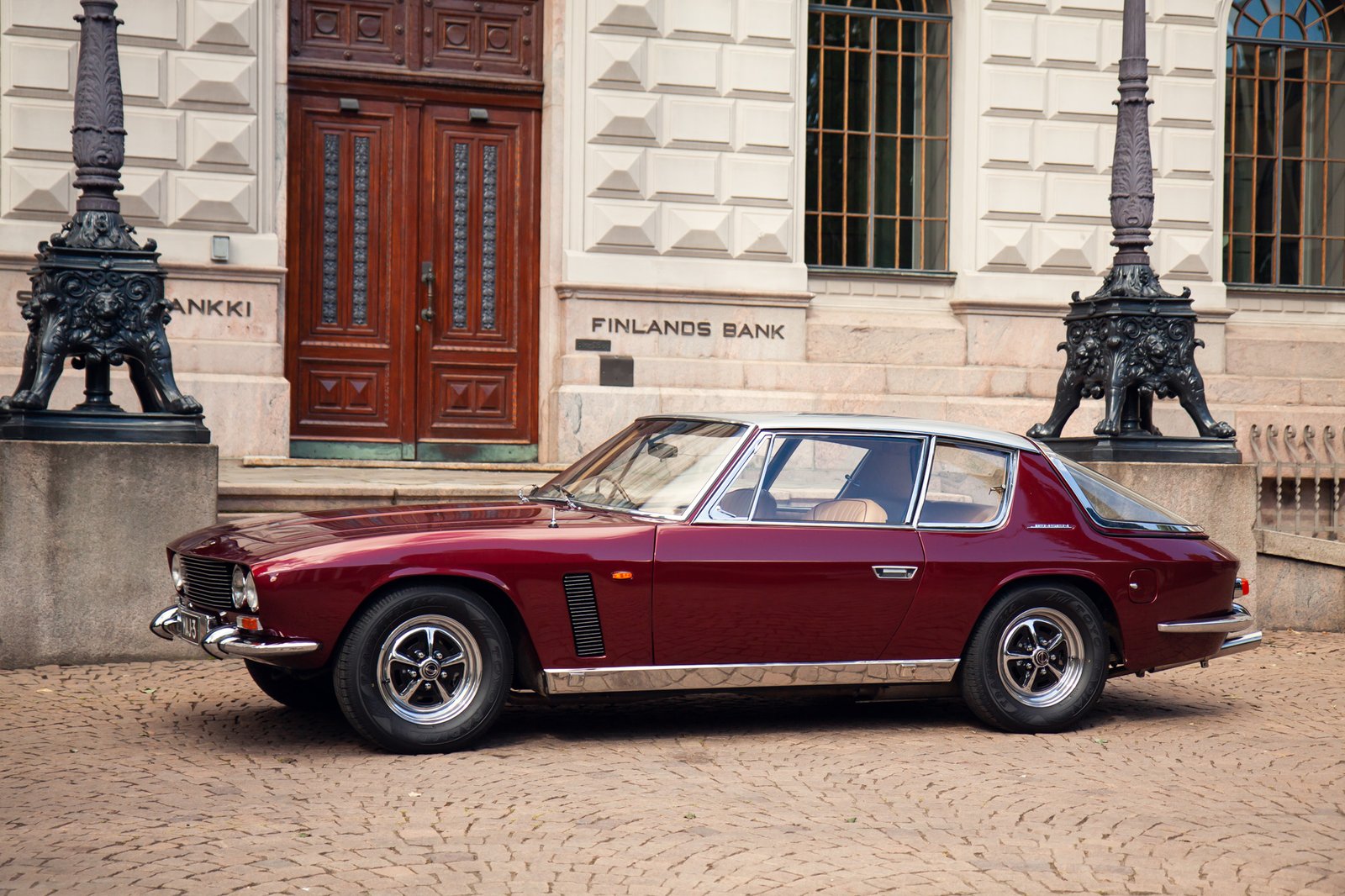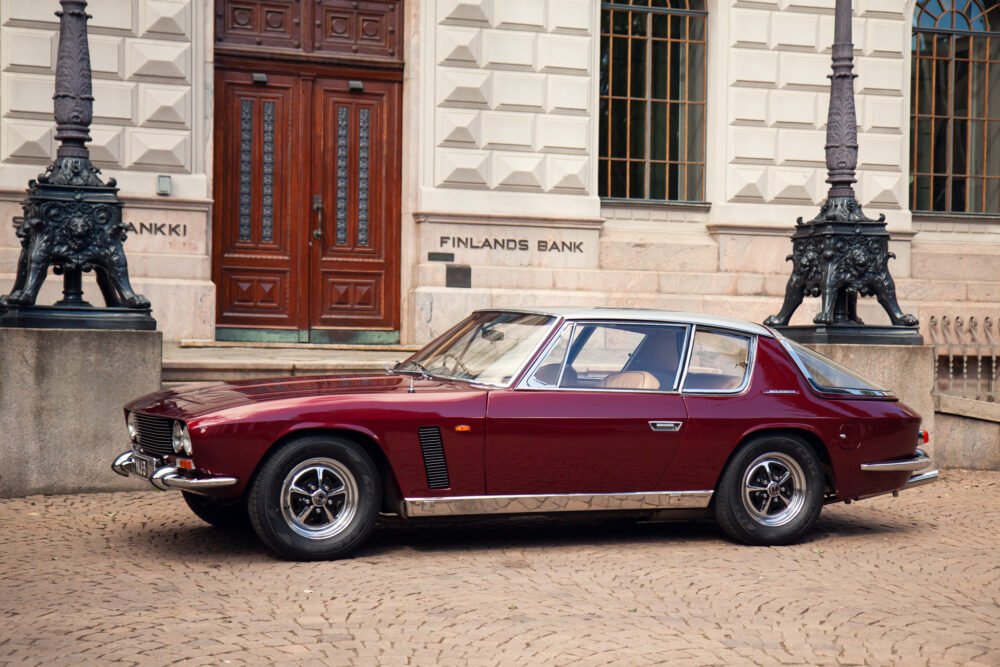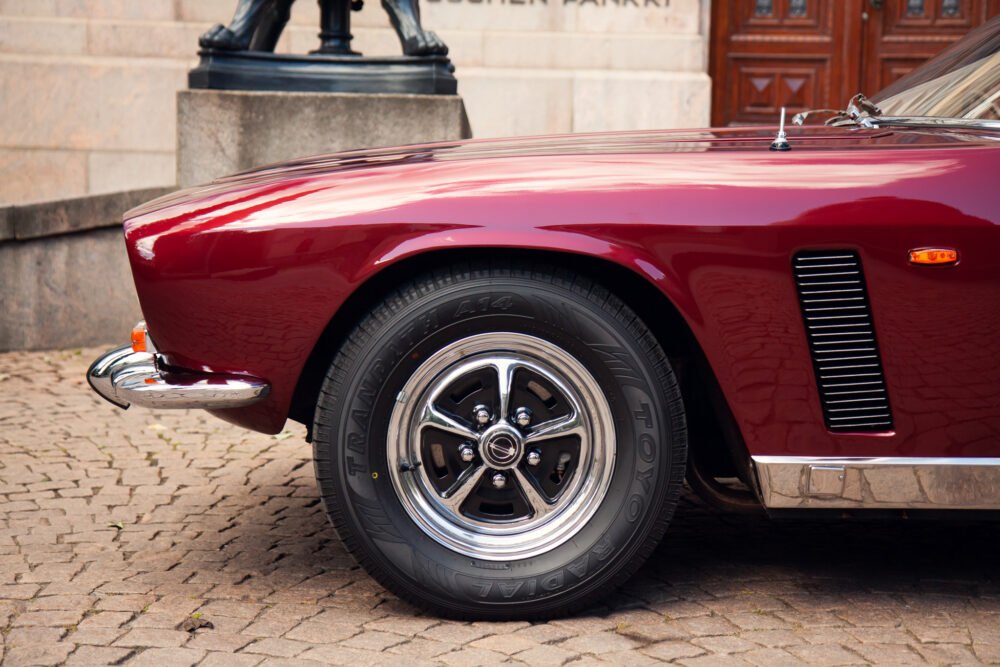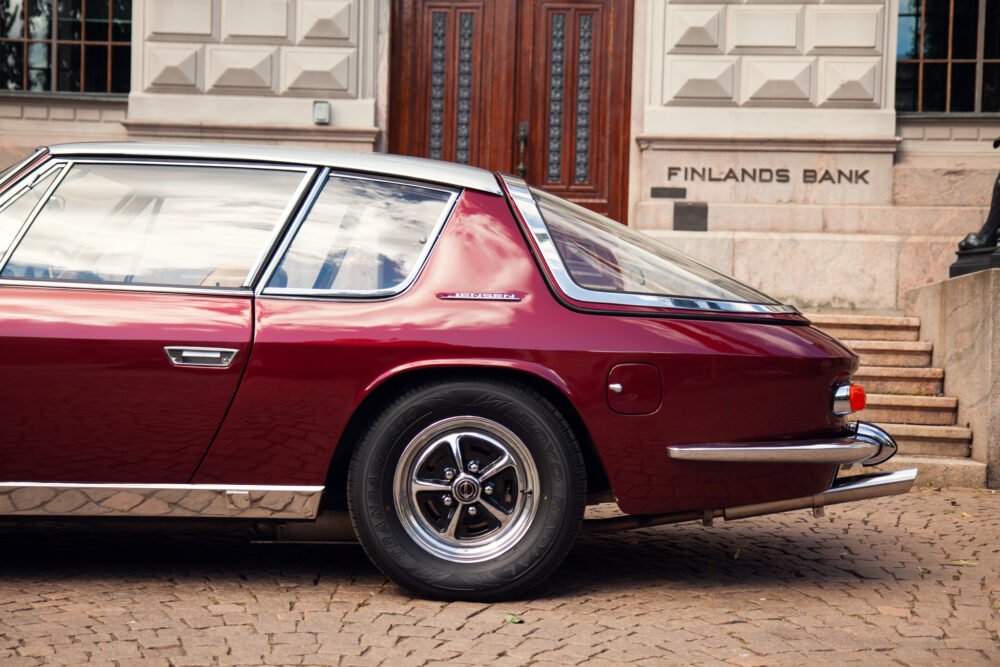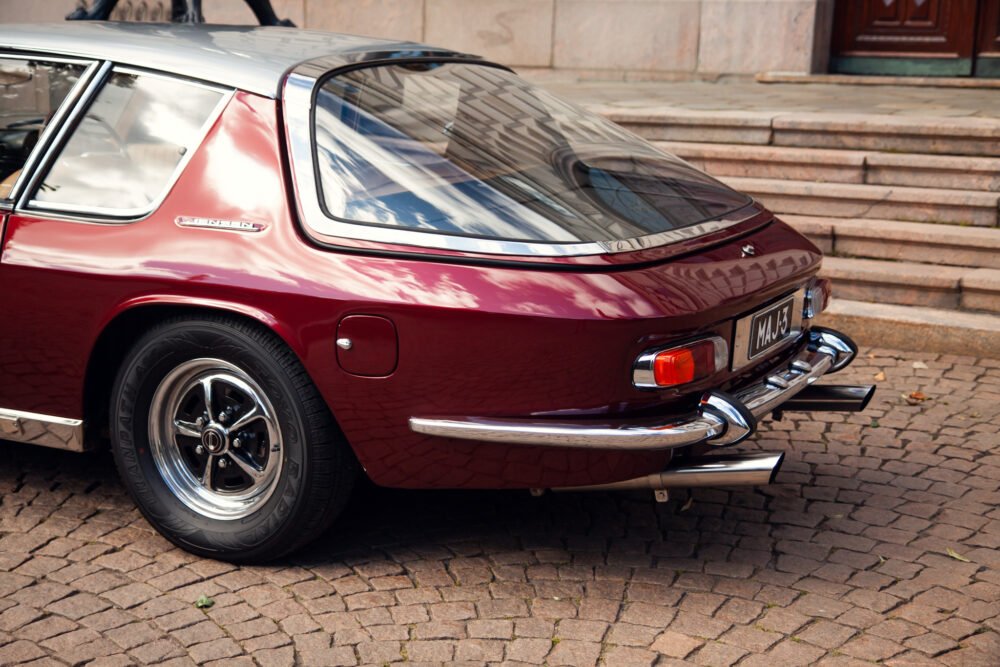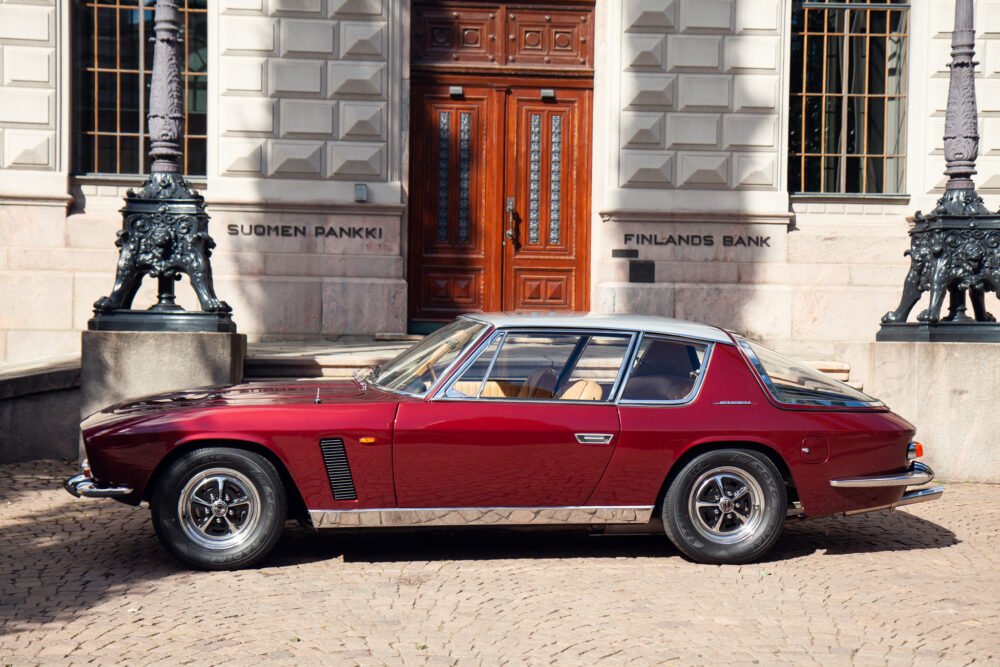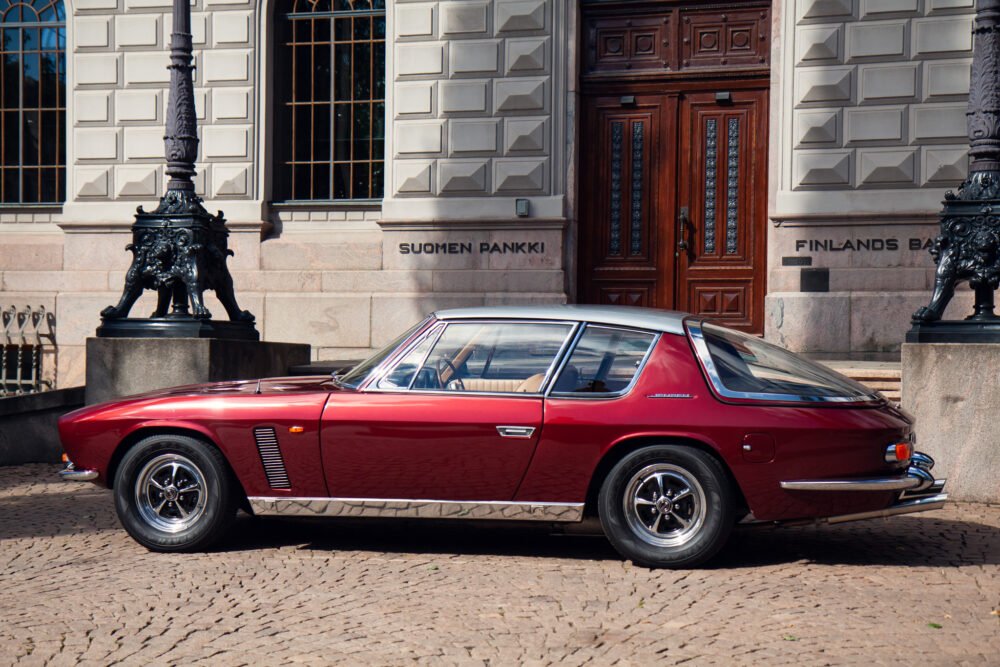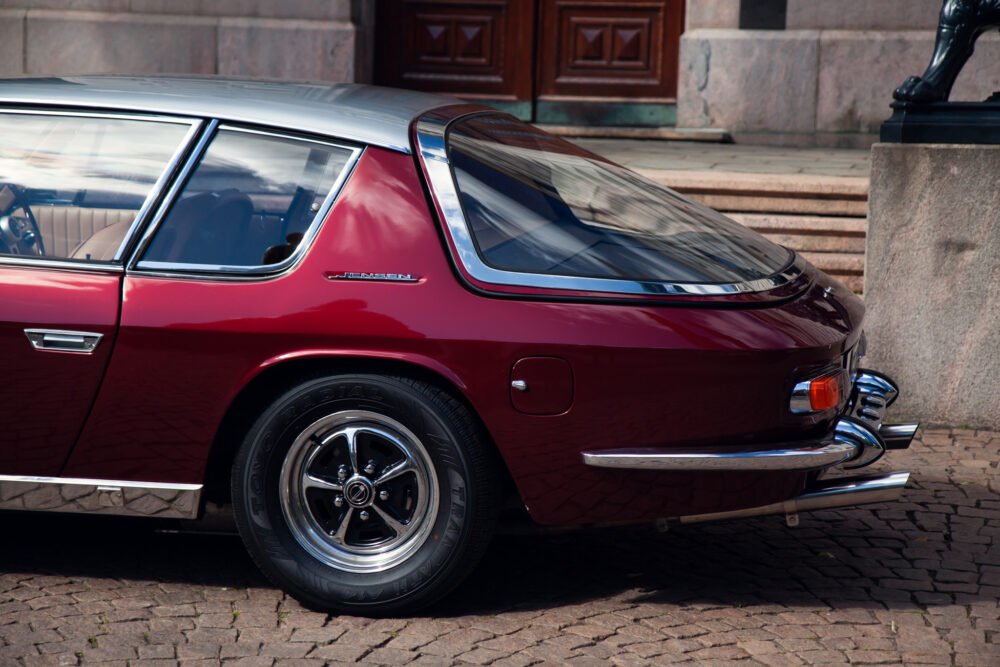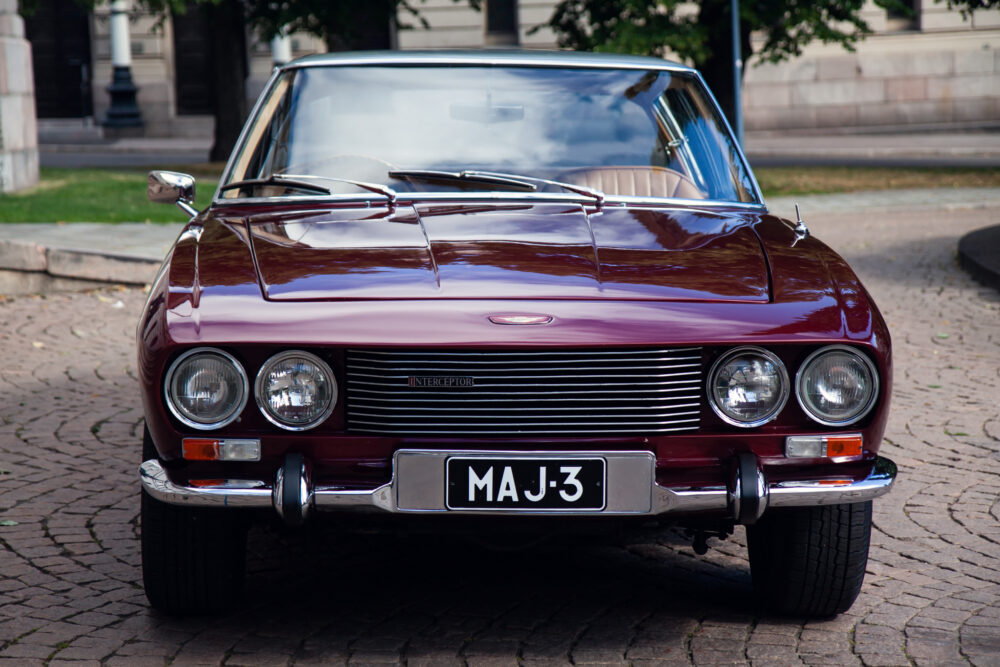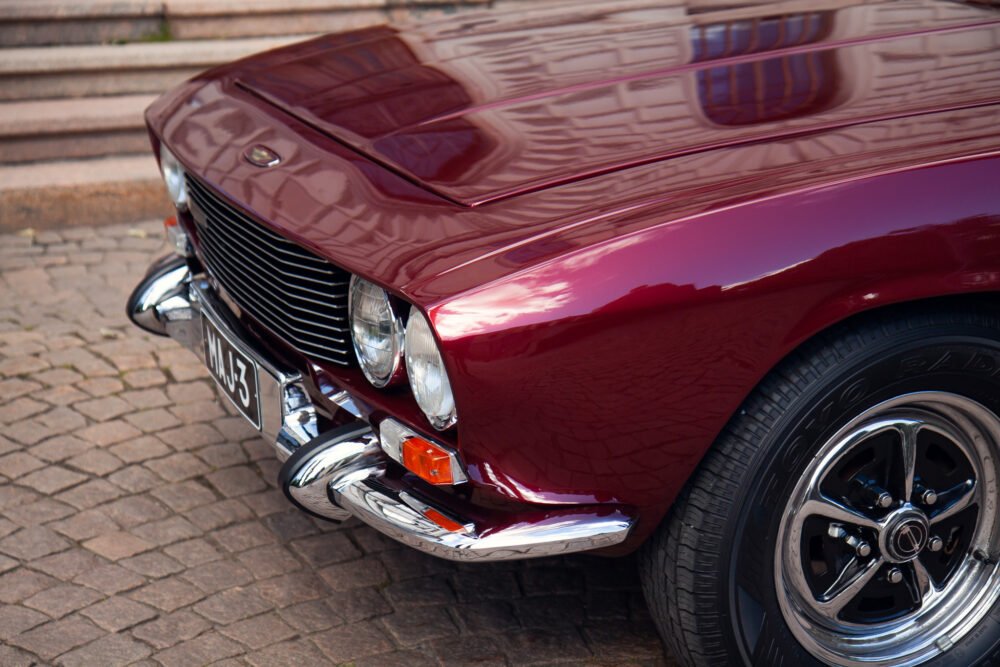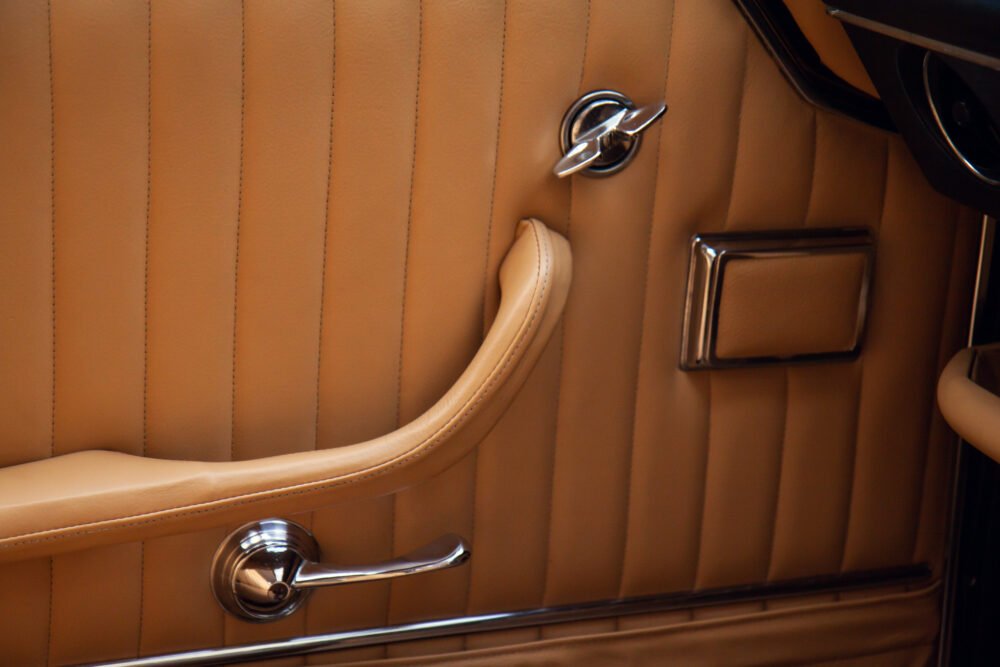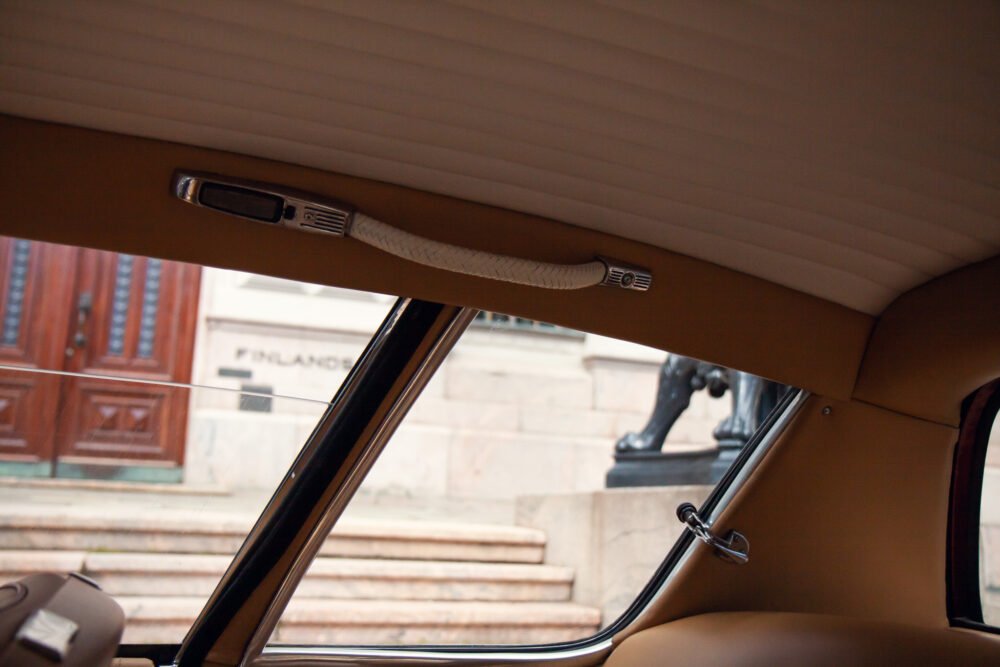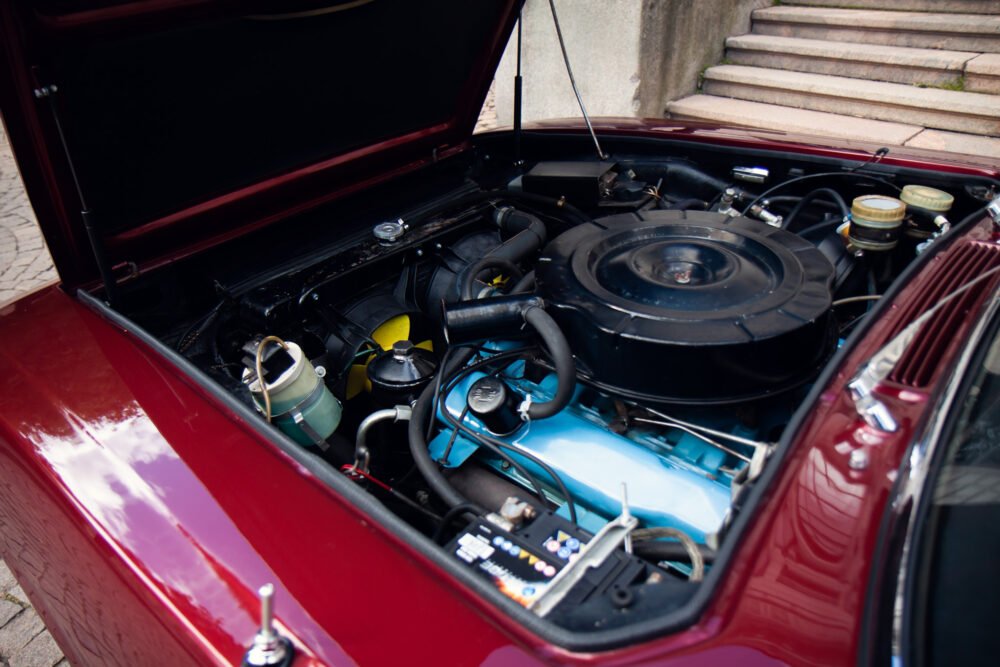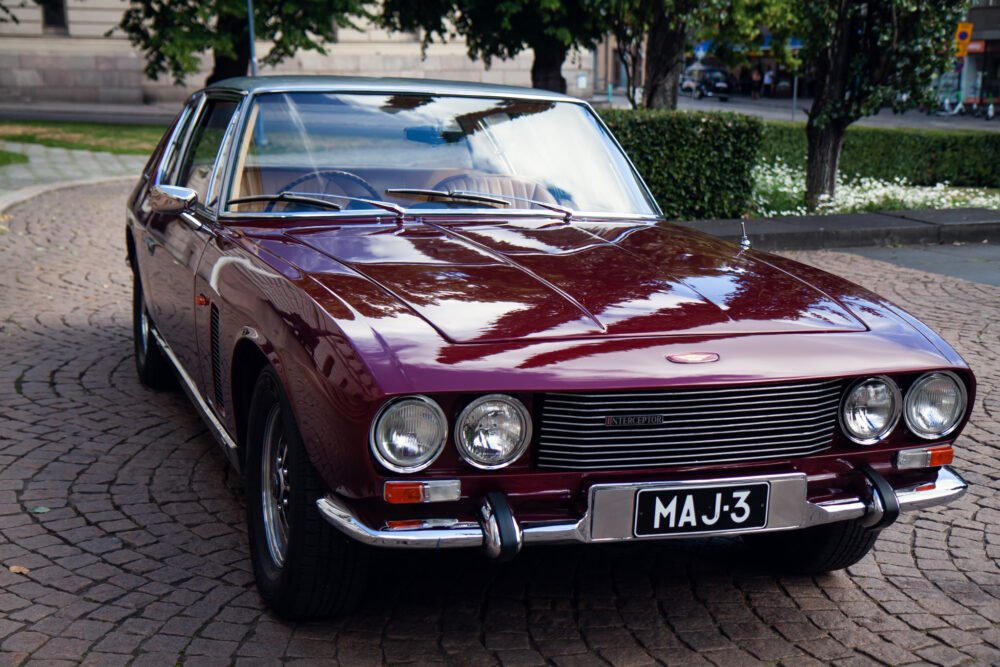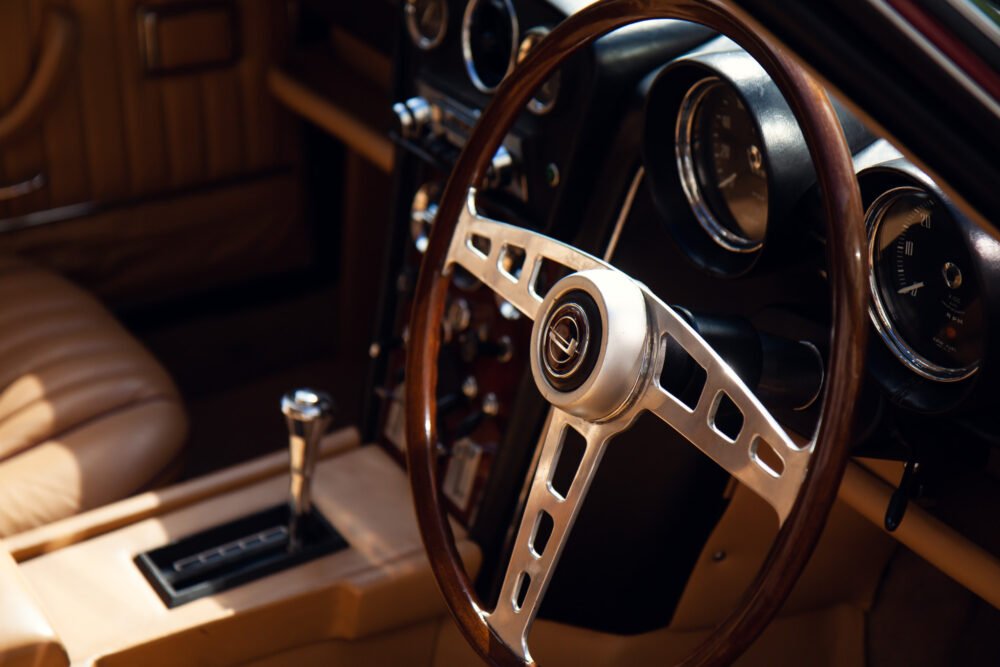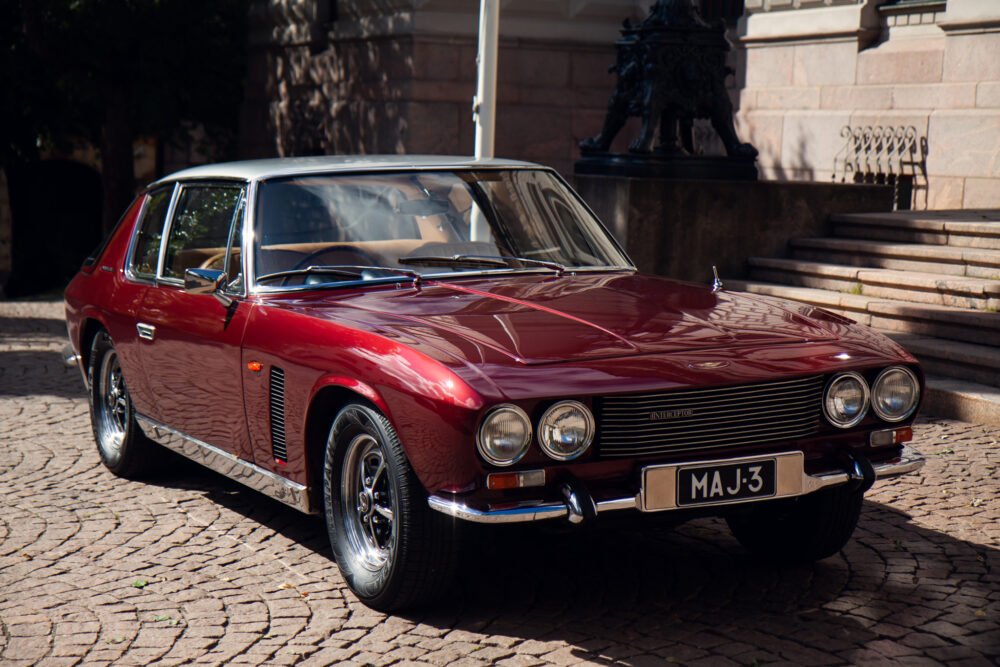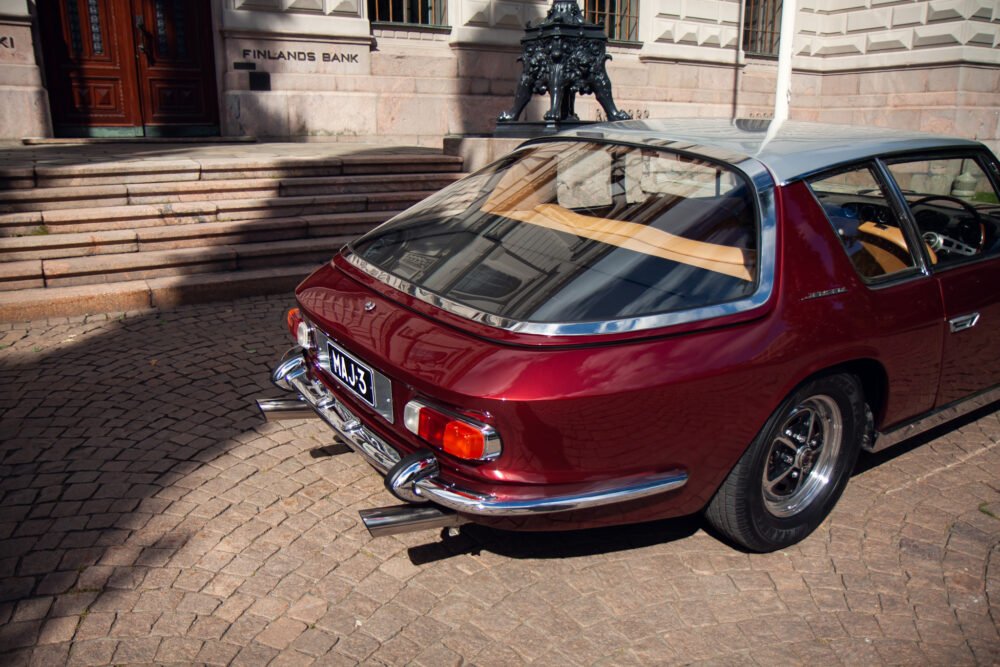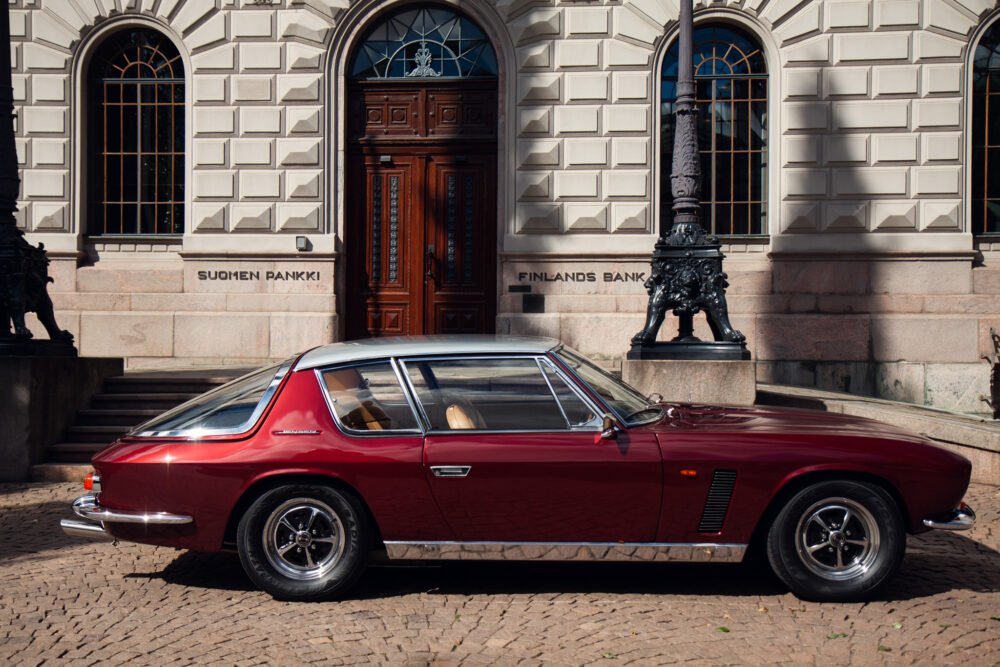Jensen Interceptor MKI ’1967
Chassis no. 115/2574
First registration 11.7.1967
6.3 L 383 Cu V8 engine, 325 horsepower. Torqueflite automatic transmission.
Driven 87,000 mi / 140 tkm’s
Regal Burgundy red with beige leather interior.
Registered as a historic vehicle, inspection valid 07/2024
Same owner in Finland 1996-2022.
Full restoration in late 1990’s. Comprehensively refurbished in 2022.
– Sold to Jersey, UK –
The 1960s and 1970s were undeniably the golden age of Gran Turismo supercars. At the end of the 1960s, two cars in particular fought for the title of the finest Gran Turismo, produced by royal craftsmanship: the Aston Martin DBS V8 and the Jensen Interceptor.
Aston Martin had been making a name for itself in motorsport ever since the Le Mans races of the early 1930s. It was also known from the movies as a stylish tool of a secret agent. That’s why it was almost unfathomable that the little Jensen from West Bromwich was able to realize a luxurious Gran Turismo supercar that was compared with Aston side by side in the car magazines. But no excuse at all. Also, Jensen did not doubt to use that in the marketing of the Interceptor, they took also advantage of famous customers who wanted an expensive and exclusive GT Supercar: Princess Anne, Donna Summer, Dusty Springfield, Tony Curtis, Henry Cooper, Cliff Richard…
In 1922, the Jensen brothers Allan and Richard Jensen began designing and manufacturing bodies for sports cars and utility vehicles. Before the Second World War, Jensen had designed no fewer than 65 different sports cars, several of which were powered by Ford’s V8. In 1962, Jensen introduced the C-V8 Gran Turismo sports car, one of the fastest four-seaters of its time.
In 1966, Jensen introduced the Gran Turismo supercar, designed by Carrozzeria Touring Superleggera. The car received one of the finest model names in car history, which Jensen had already used once before in the 1950s: Interceptor. Touring was known as the designer of Ferraris, Lamborghinis and Maseratis. It had also designed the DB4, DB5 and DB6 under Aston Martin’s license and knew what a sleek and fast GT car should be like. The stunning design of the Interceptor was made possible by a unified steel body, which was designed on a separate chassis tube frame. The first Interceptor bodies were manufactured in Italy by the body factory Vignale, but soon Jensen began to manufacture the Interceptor bodies inhouse.
Jensen Motors chose to power the Interceptor with a 6.3 liter Chrysler 383 cu V8 engine. Power readings were an impressive 325 horsepower, transmitted to the road via a rigid rear axle with a differential lock and a Torqueflite automatic transmission, or a four-speed manual transmission. “While Aston owners revved their race-bred straight sixes and crunched gears, Jensen man could surge away from any situation at the twitch of a toe with this Black-Country supercar, surging past 100 mp/h in the time it took the light in Montecristo ”, wrote CL Magazine about Jensen on November 29, 2001.
The Interceptor was a success and was produced in three model series and ten years from 1966 to 1976, a total of 7,141 units, including the four-wheel drive FF, open body models and the SP special model. The rarest of the three model series MKI–MKIII, is the MKI, of which only 1,024 were produced.
This 1967 Interceptor MKI was brought to Finland by Suomen Sijoitusautot in 1993 from England. The car had remained in good original condition, but it was still decided to restore it thoroughly. The car was bought on September 24, 1996 by K. Koskinen, director of the Koskinen wood product industry company. The restoration of the car had started in time and was continued during Koskinen’s ownership.
During the years 1994-1998, the car was thoroughly restored by professionals. The body of the car was restored and painted in Jensen’s burgundy metallic shade. The car’s engine was machined and rebuilt with all new parts. The gearbox and rear axle were disassembled and restored. The exhaust manifolds, exhaust pipe system, brakes, auxiliary equipment and wearing parts of the steering were renewed. Electrical equipment, such as electric windows and the radio, were renovated.
Jensen came to us from K. Koskinen’s estate in the spring of 2022. After the restoration, the car had been driven about 5,000 kilometers. The car had been stored in a warm garage and its body was still in very good condition, but the front floors had minor rust damage. The floors were renewed according to the original dimensions. The small defects of the body were restored and painted. The car’s engine and gearbox were serviced and adjusted, and the ignition parts and waterpump were renewed.
The car’s V8 engine runs really smoothly and it really has a plenty of power and torque. The gearbox works very smoothly and nimbly. All the electrical devices in the car work as they should.
The car’s beige leather upholstery with burgundy seeter stitching is in great condition. The headliner and small details such as knobs, handles and the original wooden steering wheel are also in great condition.
A very rare Gran Turismo supercar and an exceptionally fine specimen. Previous owner K.Koskinen was a real Jensen fan and the car has not only restoration, maintenance and repair documents, but also Jensen-related magazine articles from different decades.
Fresh Mot/Tüv inspection valid until 07/2024.
Located in Vantaa, 20 minutes from Helsinki–Vantaa Airport. Views by appointment.
Worldwide shipping with a generous rates.
